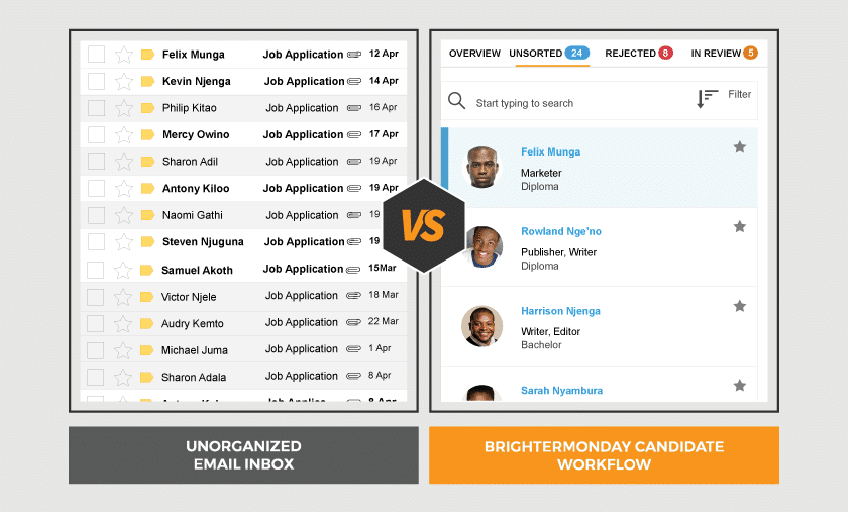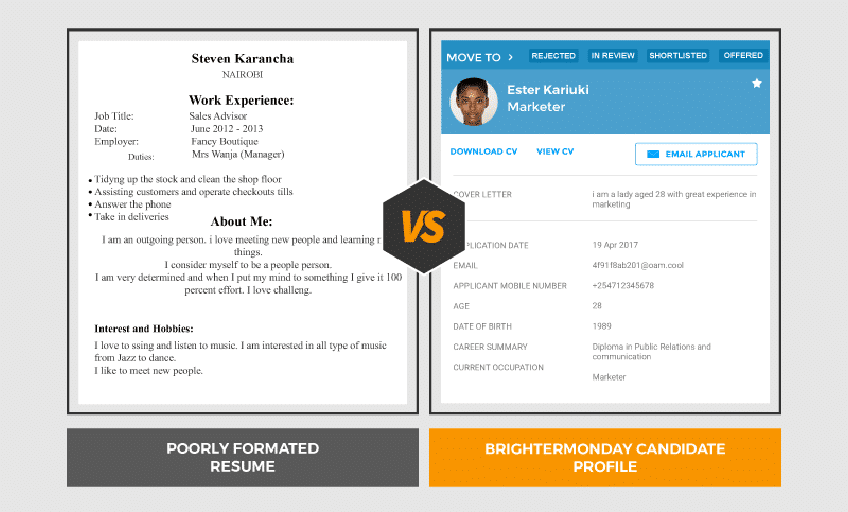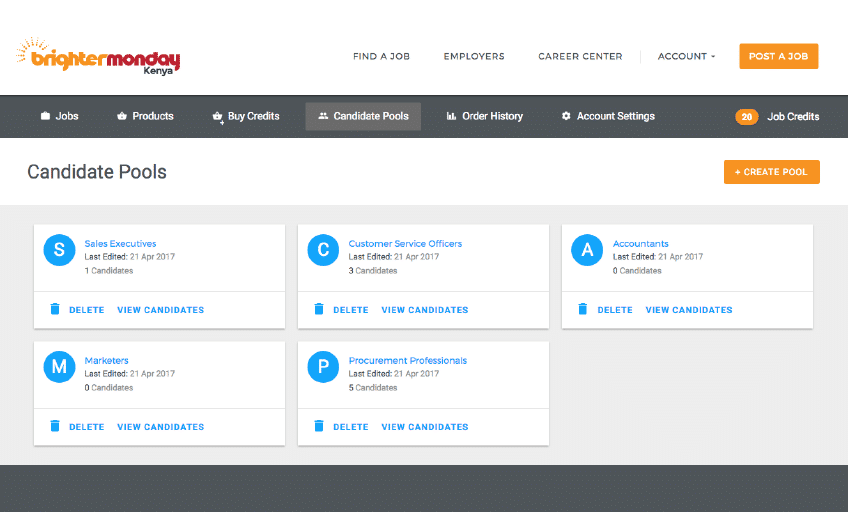Accounting: 154. Admin: 213. Sales: 64. The list can go on. What are these numbers? They are the average number of applications you will receive for every job ad you put out to the world. With numbers like that, is it any wonder that you sometimes feel overwhelmed?
It’s time to learn the secret. No recruiter, HR professional or business owner is taking care of all those applications by themselves. The secret is having the right tool for applicant management. One that works with you to find the top candidate.
Table of Contents
Your email inbox is not the answer
When is the last time you achieved inbox 0? Was it the day you first got your work email address? You’re not alone. Using email as the primary tool to classify applicants is a productivity black hole.
Don’t get me wrong, email has its place. But you can’t open 100 attachments from your email and make notes in a spreadsheet efficiently. And what if you’re hiring for multiple positions at once? Resumes are bound to get lost in the ever-growing pile. So all you end up with is a cluttered inbox.

An applicant management tool allows you to get organised. It will group applicants by the job role and categorise them into groups – which other key stakeholders can also see. So you (and everyone else whom you choose to give access) know which applicants have been rejected, which are in review, which are shortlisted and which still need to be looked at.
But let’s think about this. Do we really want to read each every resume? Open hundreds of cover letters. Wait for all those resumes to download. We know many of them will not be qualified. Frankly, that is a waste of your valuable time. Which leads us to the next tip…
Filters are your friends
You know your job criteria. The list of must haves that any candidate who does not possess, cannot be considered for the role. That could be by education level, years of experience, current position, work location or much more. Simply apply those role requirements to the list of applicants and voila! Your list of applications significantly goes down to only qualified applicants who are worth your attention.
Here is a video of how to filter your applications on the BrighterMonday ATS:
For those who do meet the hiring criteria, with an applicant tracking tool it’s one click to preview their candidate profile, which structures a resumes into an easily scannable format – but if you want to see the original, you can conveniently download it. You can then use the inbuilt email functionality to contact top candidates to invite them for interviews.

That is the power of end to end applicant tracking. A tool which allows you to centralise the recruitment process: receiving the applicants, sorting the candidates, reviewing the applications in details, contacting to arrange interviews and sharing shortlist candidates with your boss or colleagues. And not just for one open role, but for all of them.
Don’t even post a job ad in the first place
But what if we skip all that. How about we don’t post a job ad at all. You probably already look to your network. And likely have a strong employer brand so can fill some position by word of mouth. But what of those harder to staff roles?
It’s probable when you put up a job ad you have applicants who are not quite suitable for the role but could be a good company fit. And so we store them for later. But again, if you do this by email labels or on your computer, you will likely lose some along the way.
It’s easier to add them to candidate pools in your candidate management tool. Name those pools by job roles and add interesting profiles over time. That way, when the role becomes available, you can contact those candidates who are not only suitable but have shown interest in working for your company. It’s a win-win.

So are you ready to have your hiring process simplified and to get the best talent? All this functionality and more is available in the BrighterMonday employer center. Create your employer account today for free.





